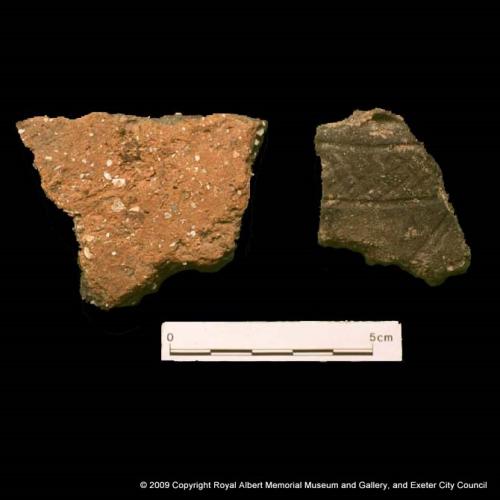Neolithic and Iron Age pottery from Friernhay Street
Back to Time Period
These fragments of ancient pottery were found during excavations in Exeter, and suggest that people were living in the Exeter area before the arrival of the Romans.
The fragment on the left is plain prehistoric pottery, possibly from the Neolithic period. The outer surface is an orange-buff colour and the inside surface light brown to grey, typical of an oxidising firing environment. The interior margins, however, are light to medium grey typical of a reducing (oxygen free) environment. This is characteristic of prehistoric pottery manufacture, for leather hard pots were placed in a Bonfire kiln to be fired. The temperature inside the kiln would reach 700-800 degrees which frequently results in only partial oxidisation of ceramics. The fabric of the pot was tempered with inclusions of crushed quartz and flint which helped prevent against thermal shock during the firing process. Like all prehistoric pottery this vessel was hand made and the inside of the sherd still shows the potter's fingerprints.
The sherd on the right is from a late Iron Age Glastonbury ware jar. Typical vessels made from this pottery are necked bowls, saucepan pots and simple rimmed jars. The decoration on this sherd is etched cross-hatching, whcih is typical of this style of pottery. The pot has been dipped in a mica slip coating (liquid clay containing crushed mica) prior to firing which has resulted in a sparkly finish. The fabric is quite course with grit inclusions of sand and limestone, probably of north Somerset origin.



















